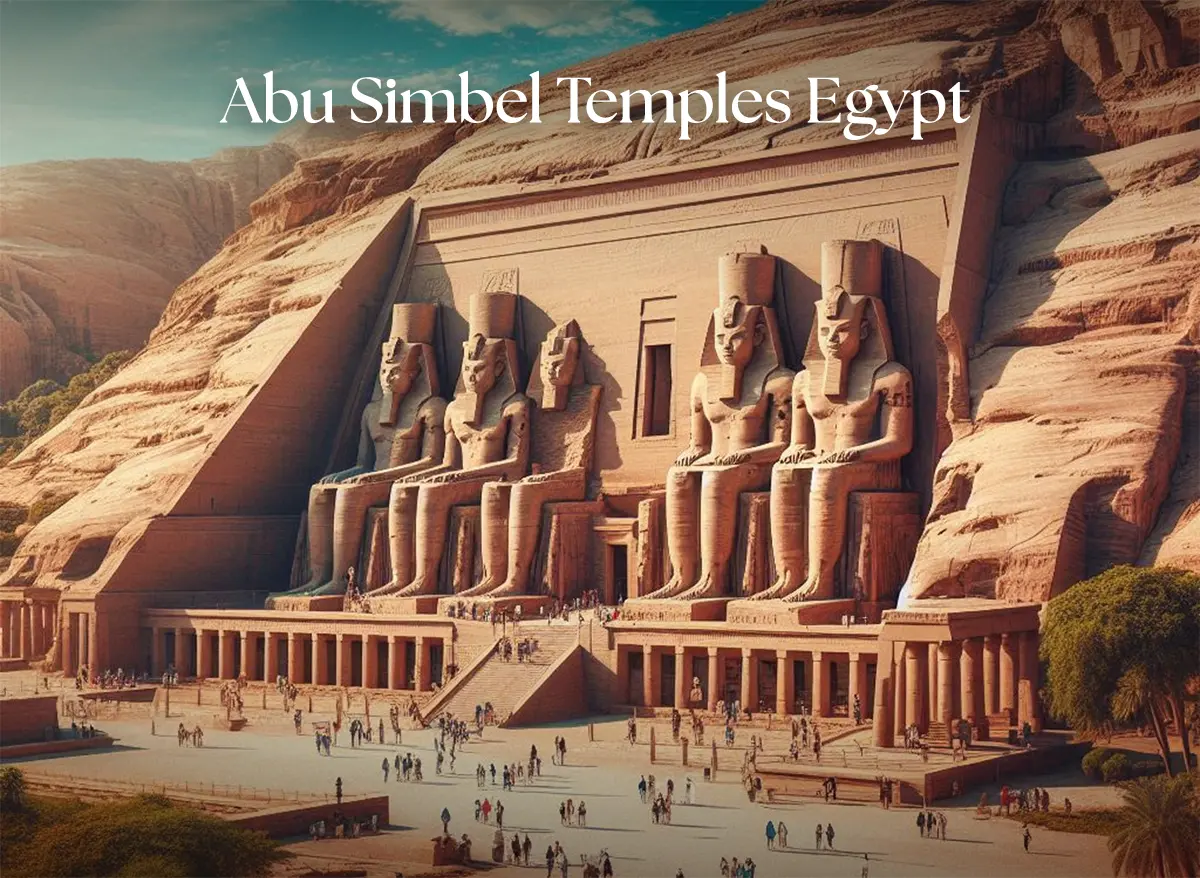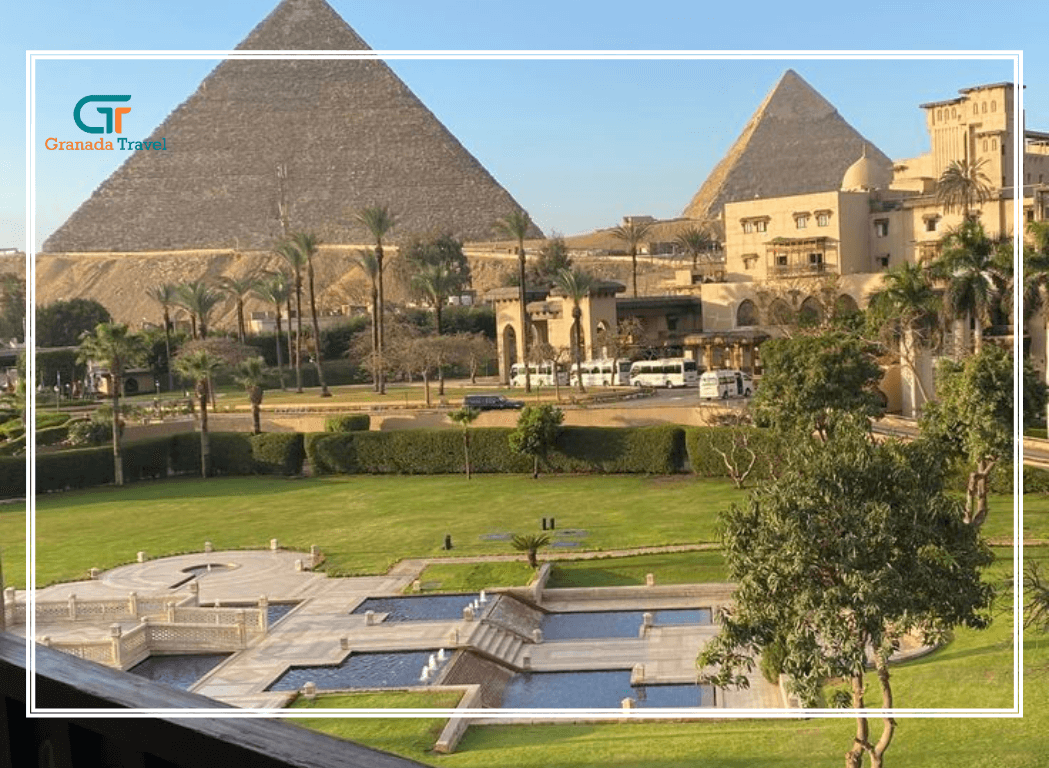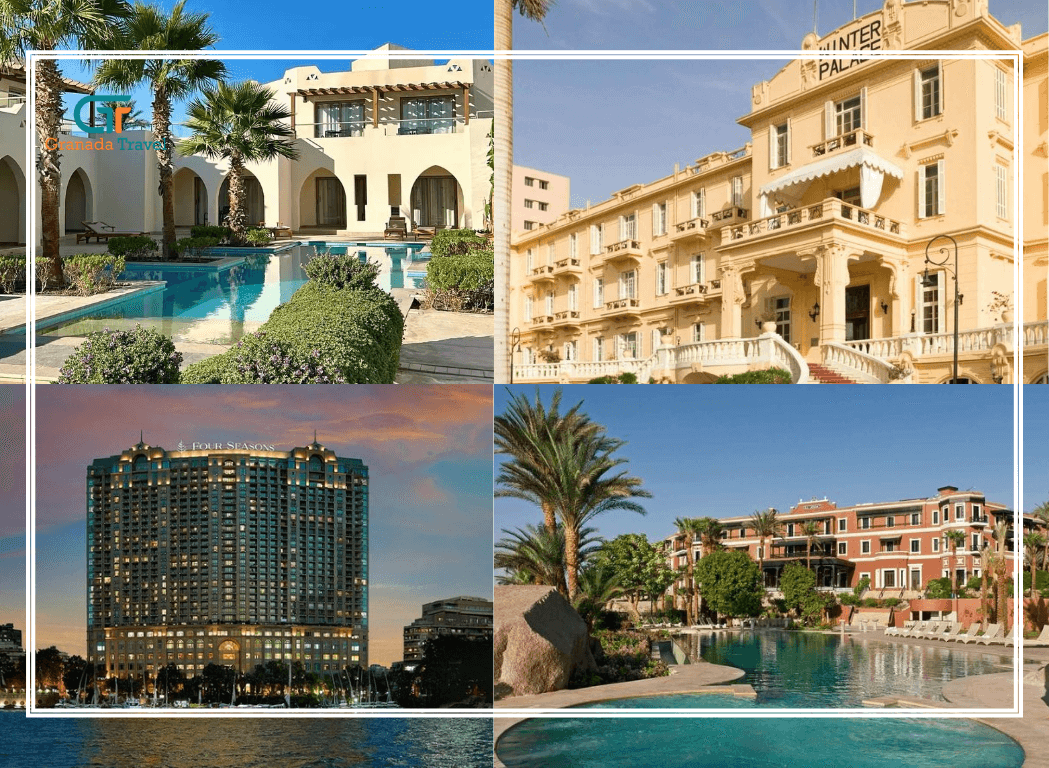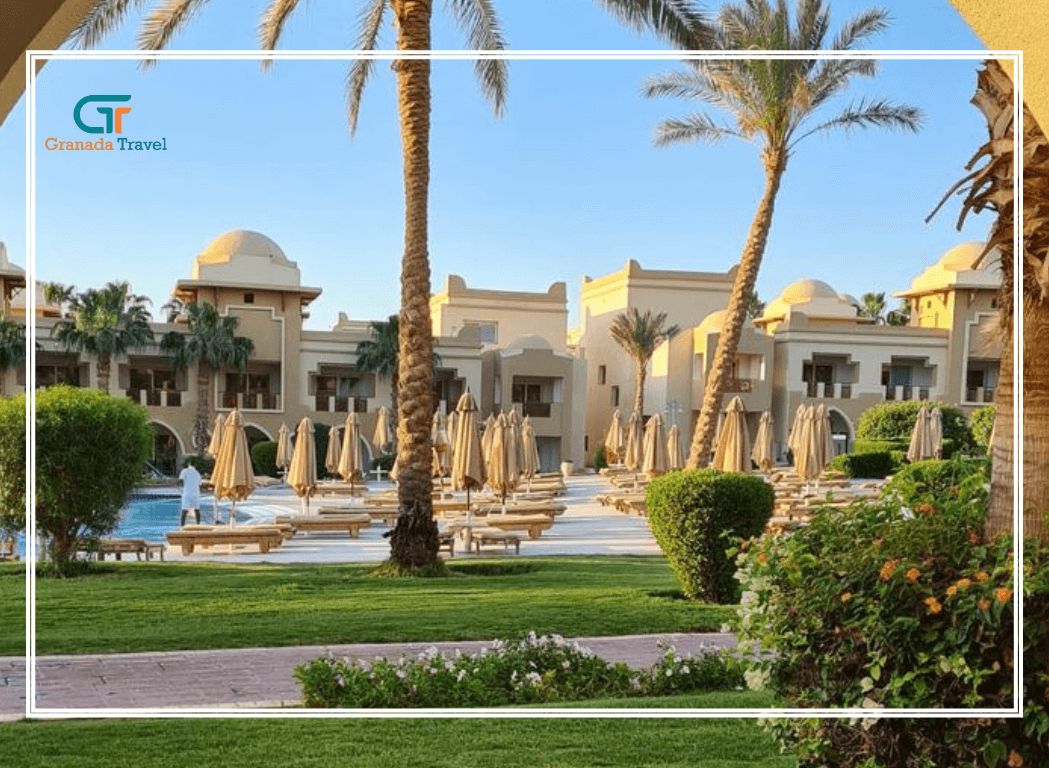
Exploring the Majestic Abu Simbel Temples Egypt
Nestled on the western bank of Lake Nasser, the Abu Simbel Temples in Egypt stand as a testament to ancient Egyptian grandeur and architectural prowess. These iconic monuments, carved into a sandstone cliff, are among the most awe-inspiring archaeological sites in the world. Built during the reign of Pharaoh Ramses II in the 13th century BCE, the Abu Simbel Temples captivate visitors with their colossal statues, intricate hieroglyphics, and fascinating history. In this blog, we’ll dive into the wonders of the Abu Simbel location, explore the Temple of Ramses II at Abu Simbel, and uncover why this UNESCO World Heritage Site is a must-visit destination.
The History of the Abu Simbel Temples Egypt
The Abu Simbel Temples Egypt were constructed around 1264 BCE to commemorate Ramses II’s victory at the Battle of Kadesh and to assert his divine power. The larger temple, known as the Temple of Ramses II at Abu Simbel, is dedicated to the gods Ra-Horakhty, Amun, and Ptah, as well as the deified Ramses II himself. The smaller temple honors Queen Nefertari, Ramses II’s beloved wife, and the goddess Hathor. These temples were strategically placed in Nubia, near the modern Abu Simbel location in southern Egypt, to impress and intimidate neighboring regions.
The Abu Simbel Temples were rediscovered in 1813 by Swiss explorer Johann Ludwig Burckhardt, partially buried under sand. Their excavation revealed the monumental scale of the Temple of Abu Simbel, with its four colossal statues of Ramses II, each standing over 20 meters tall, guarding the entrance. The intricate Abu Simbel hieroglyphics and reliefs inside narrate tales of divine kingship and military triumphs, making the site a treasure trove for historians and travelers alike.
The Abu Simbel Relocation: A Modern Marvel
One of the most remarkable stories associated with the Abu Simbel Temples Egypt is their relocation in the 1960s. When the construction of the Aswan High Dam threatened to submerge the temples under Lake Nasser, an international effort led by UNESCO saved them. Between 1964 and 1968, the Abu Simbel relocation saw the temples meticulously dismantled, cut into over 2,000 blocks, and reassembled 65 meters higher and 200 meters back from the river. This engineering feat preserved the Abu Simbel Temples for future generations and remains a symbol of global cooperation. Learn more about the Abu Simbel relocation and its significance.
Exploring the Temple of Ramses II at Abu Simbel
The Temple of Ramses II at Abu Simbel is the centerpiece of the Abu Simbel Temples Egypt. As you approach, the four towering statues of Ramses II dominate the façade, exuding power and divinity. The Abu Simbel temple inside is equally mesmerizing, with its grand hypostyle hall featuring eight massive pillars adorned with Osirid statues of the pharaoh. The walls are covered in vivid Abu Simbel hieroglyphics and reliefs depicting Ramses II’s military campaigns, including the Battle of Kadesh.
A highlight of the Abu Simbel temple inside is the sanctuary, where statues of the gods and Ramses II sit. Twice a year, on February 22 and October 22, the sun aligns perfectly to illuminate three of the four statues in the sanctuary, a phenomenon known as the Sun Festival. This architectural precision showcases the ancient Egyptians’ advanced understanding of astronomy and engineering.
The Smaller Temple of Nefertari
Adjacent to the Temple of Ramses II at Abu Simbel is the smaller but equally stunning temple dedicated to Queen Nefertari and the goddess Hathor. This temple is unique because it’s one of the few in Egypt built for a queen. The facade features six statues, four of Ramses II and two of Nefertari, flanked by smaller figures of their children. The inside Abu Simbel temple of Nefertari is adorned with delicate reliefs showing the queen making offerings to Hathor.
The Abu Simbel Temples Egypt are a rare example of a pharaoh honoring his queen on such a grand scale, making the Nefertari temple a must-see. Visitors often share glowing Abu Simbel temples reviews, praising the intricate artistry and the emotional resonance of this tribute to love and devotion.
[cta-actions]
Abu Simbel Location and How to Get There
The Abu Simbel location is approximately 280 kilometers south of Aswan, Egypt, near the border with Sudan. Most visitors reach the Abu Simbel Temples via a short flight from Aswan or Cairo, landing at the Abu Simbel Airport, just minutes from the site. Alternatively, guided tours by bus or private car from Aswan are popular, often combined with visits to other nearby attractions like the Kom Ombo Temple or Edfu Temple. Check Granada Travel’s tours to book your guided trip to Abu Simbe and nearby attractions.
The Abu Simbel temple map is straightforward, with the two temples situated close to each other, making exploration easy. The site includes a visitor center with exhibits on the Abu Simbel relocation, restrooms, and a small cafe. For the best experience, arrive early to avoid crowds and capture stunning Abu Simbel photos at sunrise, when the temples glow in golden light.
Inside Abu Simbel Temple: What to Expect
Entering the Abu Simbel temple inside feels like stepping into a sacred realm. The Temple of Ramses II at Abu Simbel features a series of chambers leading to the sanctuary, each decorated with vibrant Abu Simbel hieroglyphics and scenes of divine rituals. The smaller Nefertari temple offers a more intimate experience, with its elegant depictions of the queen and Hathor.
Photography is restricted inside the temples to preserve the delicate artwork, but the exterior offers endless opportunities for Abu Simbel photos. Many Abu Simbel temples reviews highlight the emotional impact of standing before these ancient monuments, with visitors describing the experience as humbling and unforgettable.
Abu Simbel Attractions and Nearby Sites
While the Abu Simbel Temples Egypt are the main draw, the surrounding area offers additional Abu Simbel attractions. The visitor center provides insights into the temples’ history and the Abu Simbel relocation project. For a deeper dive into Nubian culture, consider visiting the Nubian Museum in Aswan Egypt , which showcases artifacts from the region.
Travelers often pair a visit to Abu Simbel in Egypt with other iconic sites along the Nile. The Aswan Temple, including the Philae Temple, is a popular stop, as are the Kom Ombo Temple and Edfu Temple. These destinations create a comprehensive journey through Egypt’s ancient wonders.
Tips for Visiting the Abu Simbel Temples in Egypt
To make the most of your visit to the Abu Simbel Temples Egypt, consider these tips:
- Timing: Visit during the Sun Festival (February 22 or October 22) for a unique experience, but book well in advance as tickets sell out quickly.
- Guided Tours: A knowledgeable guide can enhance your understanding of the Abu Simbel hieroglyphics and historical context. Check Granada Travel’s tours to book your guided trip to Abu Simbel.
- Weather: The Abu Simbel location is in a desert region, so bring sunscreen, hats, and water, especially in summer.
- Photography: Capture Abu Simbel photos early in the morning for the best light and fewer crowds.
- Tickets: Purchase tickets in advance, especially for the Sun Festival, and check Abu Simbel temples reviews for trusted tour operators.
Abu Simbel Temples Reviews: What Visitors Say
The Abu Simbel Temples Egypt consistently receive rave reviews from travelers. Visitors describe the Temple of Abu Simbel as “breathtaking” and “a bucket-list destination.” Many highlight the Abu Simbel temple inside for its well-preserved reliefs and the awe-inspiring scale of the statues. The Abu Simbel relocation story also resonates, with reviewers calling it “a miracle of modern engineering.”
Some Abu Simbel temples reviews mention the remote Abu Simbel location as a challenge, but most agree the journey is worth it. Travelers recommend combining the visit with a Nile cruise or a trip to Aswan, Egypt for a seamless experience.
Why Abu Simbel in Egypt is a Must-Visit
The Abu Simbel Temples in Egypt are more than just an archaeological site, they’re a window into the soul of ancient Egypt. From the towering statues of the Temple of Ramses II at Abu Simbel to the delicate artistry of Nefertari’s temple, every detail tells a story of power, love, and divine connection. The Abu Simbel hieroglyphics, the Sun Festival, and the incredible Abu Simbel relocation add layers of intrigue, making this destination unforgettable.
Whether you’re a history enthusiast, a photographer seeking stunning Abu Simbel photos, or a traveler chasing iconic landmarks, the Abu Simbel Temples Egypt deliver an experience like no other. Plan your visit to this extraordinary site and immerse yourself in the legacy of Ramses II and Nefertari.
[cta-actions]
Exploring the Majestic Abu Simbel T…
Ready to Book?
Get in touch with us for personalized travel experiences
Contact Us
Send us your inquiry





